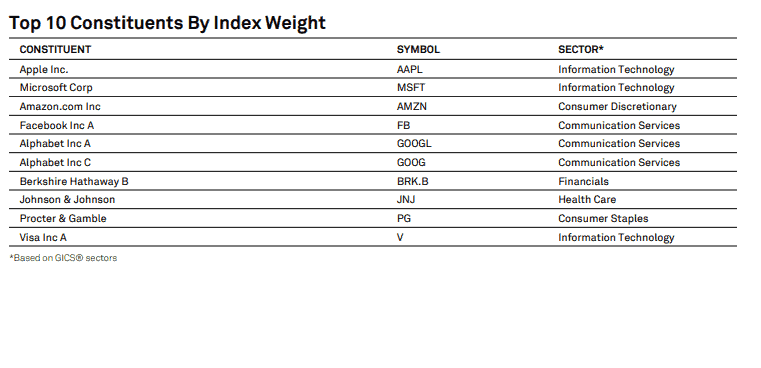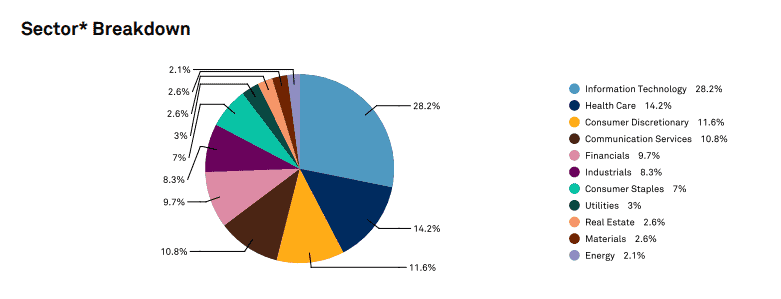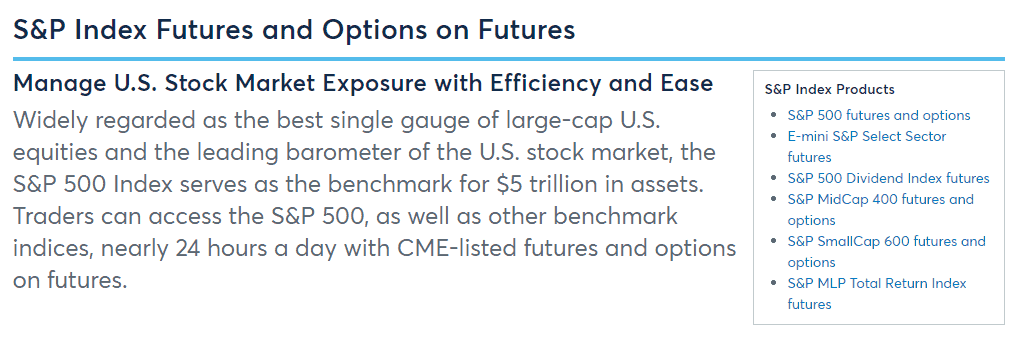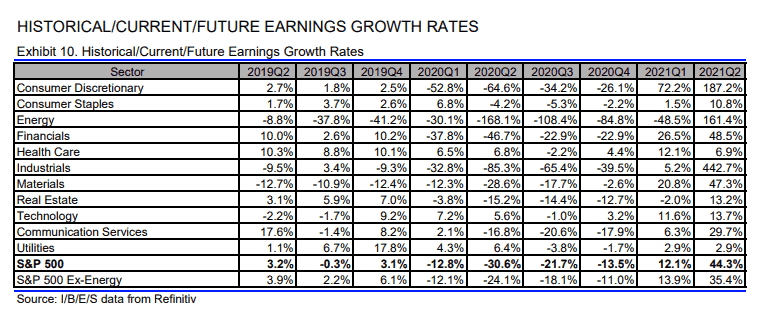S&P 500 index. Everything most important
S&P 500 index is a stock index. It was built on the value of 505 US companies with the largest capitalization.
The index was established in 1957 and it was the first index in the US, weighted by capitalization.
Economists, analysts and investors use this index for assessing the state of the stock market. Index covers approximately 83% of the whole US market capitalization and includes companies from various sectors. The S&P 500 index unites a whole family of indices. Apart from the S&P 500 index, there are separate indices for companies with small and medium capitalization.
In order to calculate the index, the company data are weighted by capitalization, which means that bigger companies have a bigger weight in the index. As of September 2020, Apple has the biggest weight – more than 6%.
In order to calculate the weight of a specific company in the index, the market value of its stock is divided into the total value of all market stocks.
Let’s see an example of such a calculation for Facebook as of June 30, 2020.
There are 2,850,000 shares of the company in circulation as of the second quarter and their value at that time was USD 229.07 per share. Thus, we can calculate the Facebook market capitalization using the following formula:
USD 229.07 * 2,850,000 = USD 652,849,000.
The general market capitalization of the index was USD 25.64 billion as of June 30, 2020.
So, we can calculate the Facebook weight as follows:
USD 652,849,000 / USD 25,640,000,000 = 0.025 = 2.5%
505 companies (constituents) are included into the index as of September 2020. If you want to find out what the S&P 500 index constituents are, you can download the complete list from the ‘additional info’ section on the official web-site.
Top 10 largest companies take 28% of the index. You can see names of these companies in the following table. As we already mentioned, Apple is the largest company in the index.
If large company stocks are overvalued in the index, they increase the value of the index itself.
The S&P 500 index includes 11 sectors. They are not presented equally by capitalization. We marked percentage shares of the most significant sectors in the list, while you can see the complete information in the following picture:
- Energy
- Industrials
- Materials
- Consumer Discretionary – 11.6%
- Consumer Staples
- Health Care – 14.2
- Financials
- Information Technology – 28.2% of the index. This is the largest sector
- Communication Services
- Real Estate
- Utilities
What companies can get into the index and how often their composition changes
A special index committee manages the S&P 500 index. It identifies the dividend policy and sets rules. The committee meets once a month to discuss corporate events, which can influence the index, and to select new candidates. As a rule, the index committee conducts the index rebalancing every quarter. Stocks are selected by their liquidity, size and sector.
The most recent rebalancing was held on September 4 and came into force on September 21. Many analysts and investors expected that the Elone Musk’s Tesla would be included into the index but it didn’t happen. However, you should keep in mind that the committee can make a decision about including a company in the index out of schedule.
Such a ‘manual’ selection of companies makes the S&P index different from the Russell index, which selects stocks in accordance with a formula.
For a company to get into the S&P index, it should meet the following criteria:
- it should be a US company;
- its capitalization should be above USD 8.2 billion;
- its stock should be in free market circulation to the value of over USD 4.2 billion, which means more than 50% of the whole stock;
- its total profit for the previous 4 quarters should be positive and the profit for each separate recent quarter should also be positive;
- its stock should meet the liquidity criteria – minimum 250,000 of shares have been traded every month during the previous 6 months and their value is more than USD 1 (annual dollar value traded > USD 1).
How to invest in the index or trade it
Even if your start-up capital is not big, you can trade mini or micro contracts.
Yield by years, forecasts and analysis
The next chart shows the S&P 500 yield by years. As a rule, in order to assess the yields of investments, they are compared with the index. If the yield is higher, it means that portfolio managers are worth their salt.
The S&P 500 index didn’t always grow, although the 10-year chart looks very bullish. The index fell on March 12, 2020, by a maximum number of points since the Black Monday. But it already reached the historic high of USD 3,389.78 on August 18, despite the economic difficulties caused by coronavirus.
For the first time, the index was closed above USD 1,000 in February 1998 and now it is traded above USD 3,000.
Many analytical firms publish S&P 500 forecasts. You can see one of such forecasts in the picture below. According to it, the index would be actively growing starting from the first quarter of 2021.
However, all forecasts have a probabilistic nature and any unexpected event may influence the S&P 500 dynamics. Such an unexpected event could be, for example, the result of the US Presidential election.
You can find the S&P 500 index chart online on reference resources.
Information in this article cannot be perceived as a call for investing or buying/selling of any asset on the exchange. All situations, discussed in the article, are provided with the purpose of getting acquainted with the functionality and advantages of the ATAS platform.









